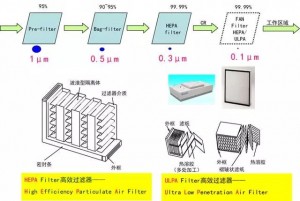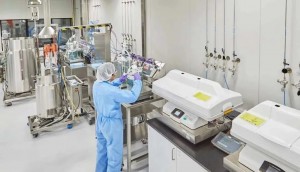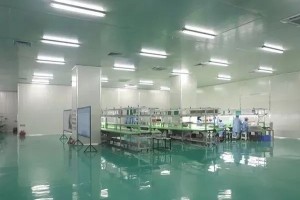Dust is one of the quality and safety accidents of cosmetic products. There are many sources of dust in cosmetic products, among which the dust generated in the manufacturing process is the main factor, which involves the manufacturing environment of the cosmetic products themselves and the manufacturing environment of the upstream packaging materials. Dust-free workshops are the main technical and hardware means to isolate dust. Dust-free workshops are now widely used in the manufacturing environment of cosmetics and packaging materials.
1. How dust is generated Before understanding the design and manufacturing principles of dust-free workshops in detail, we must first clarify how dust is generated. There are five main aspects of dust generation: leakage from the air, introduction from raw materials, generation from equipment operation, generation from the production process, and human factors. Dust-free workshops use special materials and designs to exclude particulate matter, harmful air, bacteria, etc. from the air, while controlling indoor temperature, pressure, air flow distribution and air flow speed, cleanliness, noise vibration, lighting, static electricity, etc., so that no matter how the external environment changes, it can maintain the originally set cleanliness and humidity.
The number of dust particles generated during movement

How is dust removed?

2.Overview of Dust-Free Workshop
A dust-free workshop, also known as a clean room, is a room where the concentration of airborne particles is controlled. There are two main aspects to controlling the concentration of airborne particles, namely the generation of indoor induced and retained particles. Therefore, the dust-free workshop is also designed and manufactured based on these two aspects.

3.Dust-free workshop level
The level of dust-free workshop (clean room) can be roughly divided into 100,000, 10,000, 100, 100 and 10. The smaller the number, the higher the clean level. The 10-level clean room purification project is mainly used in the semiconductor industry with a bandwidth of less than 2 microns. The 100-level clean room can be used for aseptic manufacturing processes in the pharmaceutical industry, etc. This clean room purification project is widely used in operating rooms, including transplant surgery, integrated device manufacturing, isolation wards, etc. Air cleanliness level (air cleanliness class): The level standard for dividing the maximum concentration limit of particles greater than or equal to the particle size considered in the unit volume of air in the clean space. The level of dust-free workshops is mainly divided according to the number of ventilation times, the number of dust particles and microorganisms. Domestically, dust-free workshops are tested and accepted according to the empty, static and dynamic states, in accordance with the "GB50073-2013 Clean Plant Design Specifications" and "GB50591-2010 Clean Room Construction and Acceptance Specifications".
4.Dust-free workshop construction
Dust-free workshop purification process
Airflow - primary filtration purification - air conditioning - medium-efficiency filtration purification - air supply from purification cabinet - air supply duct - high-efficiency air supply outlet - blow into clean room - take away dust, bacteria and other particles - return air louver - primary filtration purification. Repeat the above work process repeatedly to achieve the purification effect.

How to build a dust-free workshop
1. Design plan: Design according to the site conditions, project level, area, etc.
2. Install partitions: The material of the partition is color steel plate, which is equivalent to the general frame of the dust-free workshop.
3. Install the ceiling: including filters, air conditioners, purification lamps, etc. required for purification.
4. Purification equipment: It is the core equipment of the dust-free workshop, including filters, purification lamps, air conditioners, air showers, vents, etc.
5. Ground engineering: Choose the appropriate floor paint according to the temperature and season.
6. Project acceptance: The acceptance of the dust-free workshop has strict acceptance standards, which are generally whether the cleanliness standards are met, whether the materials are intact, and whether the functions of each area are normal.
Precautions for building a dust-free workshop
During the design and construction, it is necessary to take into account the problems of pollution and cross-contamination during the processing process, and reasonably design and adjust the ventilation frequency of the air conditioner or the insulation effect of the air duct.
Pay attention to the performance of the air duct, which should have good sealing, dust-free, pollution-free, corrosion-resistant, and moisture-resistant.
Pay attention to the energy consumption of the air conditioner. Air conditioning is an important component of a dust-free workshop and consumes a lot of energy. Therefore, it is necessary to focus on the energy consumption of air conditioning boxes, fans, and coolers, and choose energy-saving combinations.
It is necessary to install telephones and fire-fighting equipment. Telephones can reduce the mobility of personnel in the workshop and prevent dust from being generated by mobility. Fire alarm systems should be installed to pay attention to fire hazards.
Post time: Oct-10-2024

